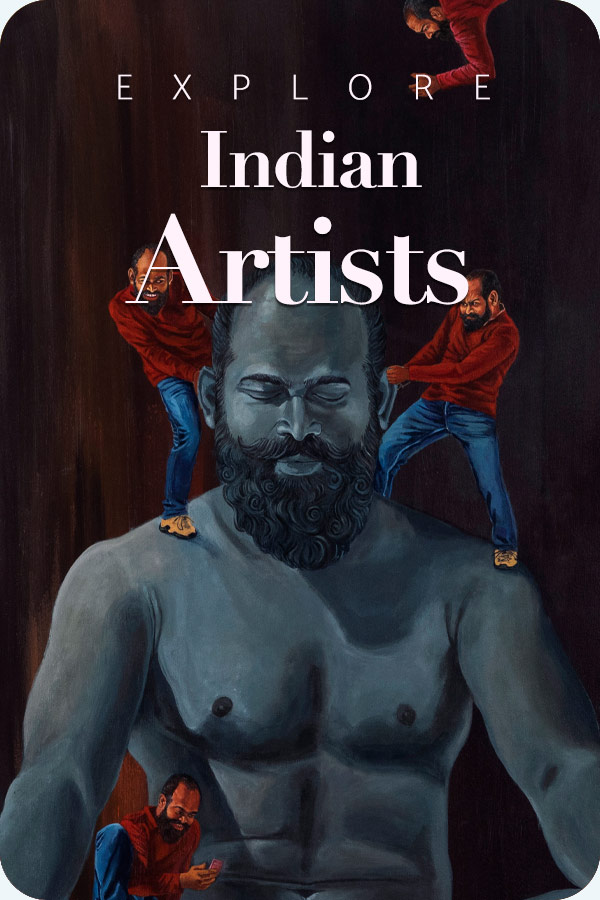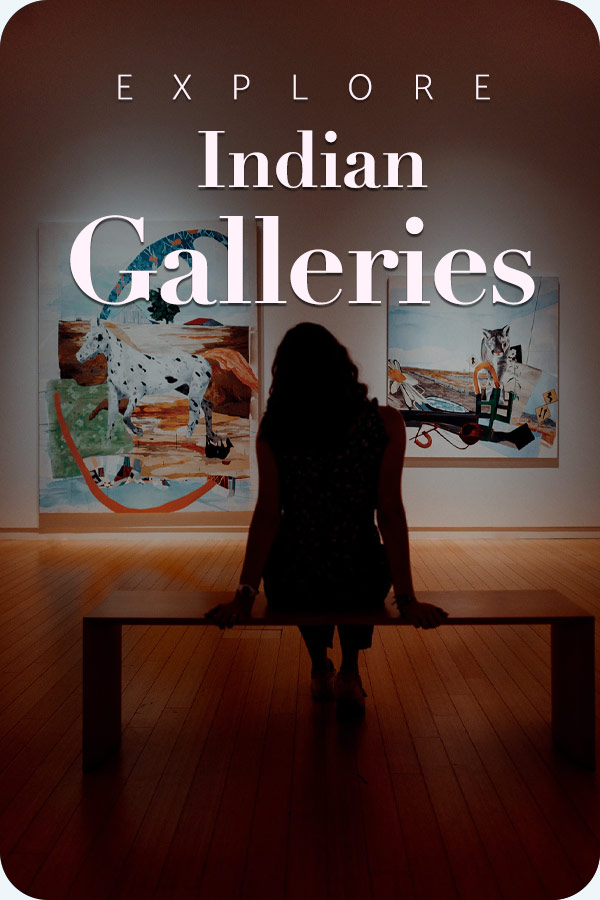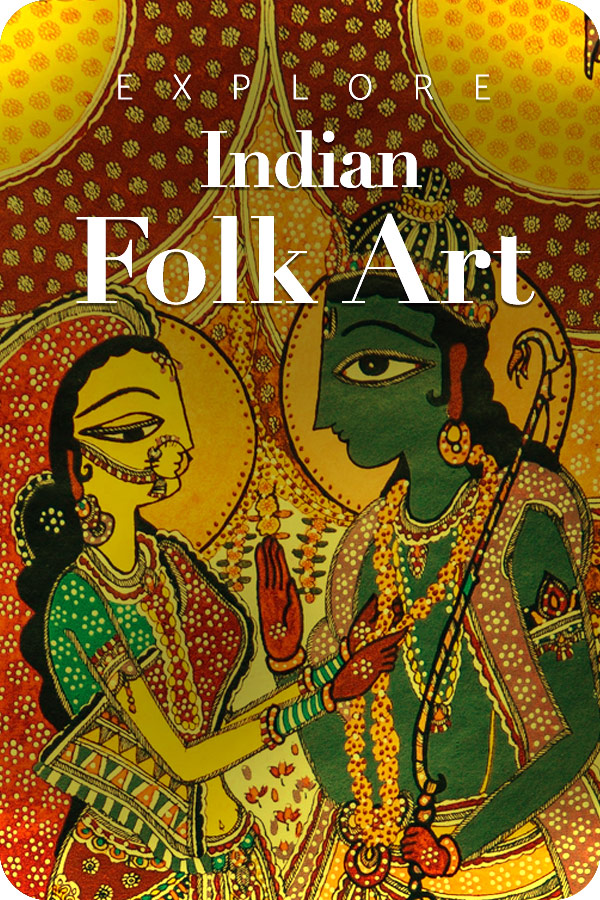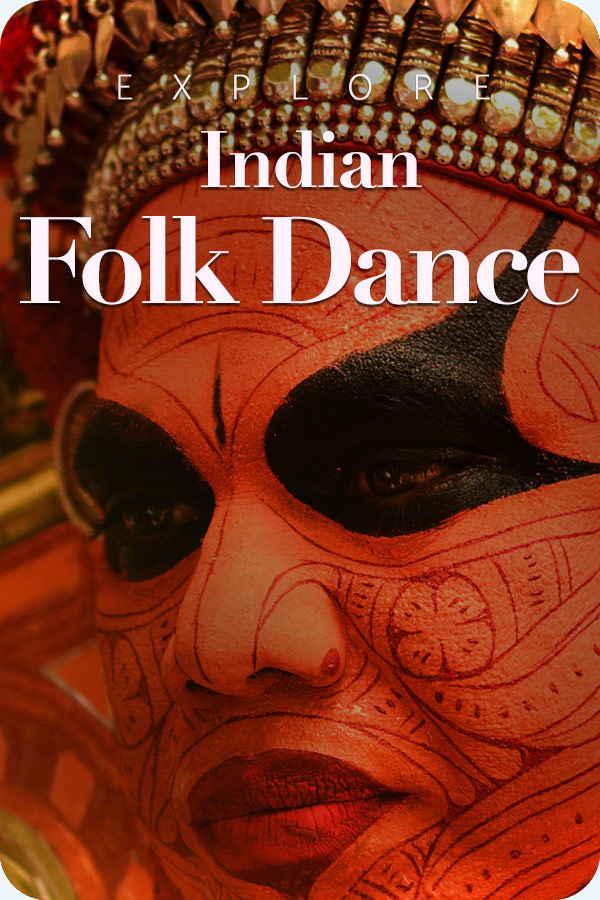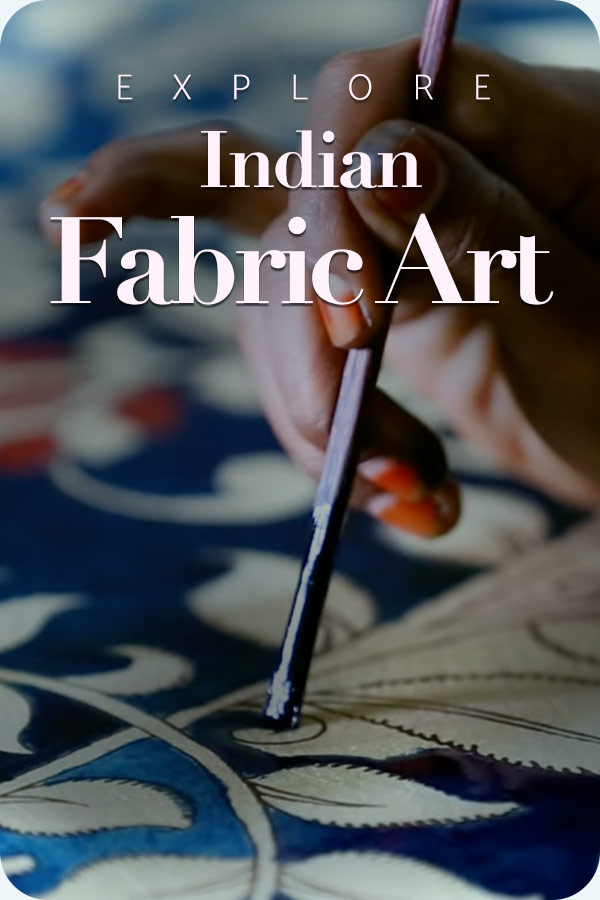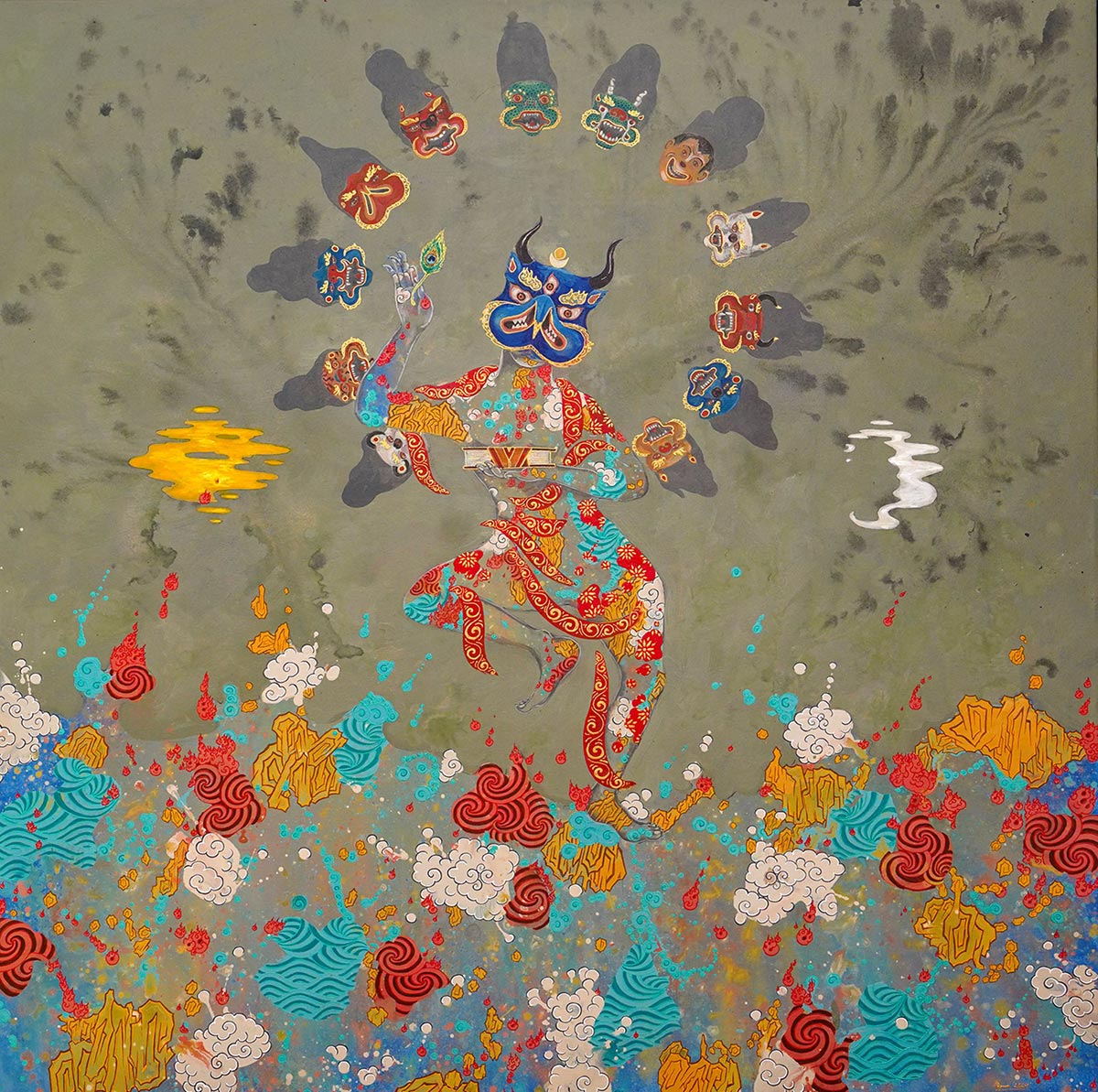
Threshold Art Gallery in New Delhi is ready to open its doors to share a powerful exhibition this fall with In-Between Dreams, the inaugural solo show of Bhutanese artist Pema “Tintin” Tshering. Make sure to be a part of it from September 19 to October 18, 2025. In-Between Dreams isn’t just a visual journey but a spiritual experience based on Buddhism’s bardo, the state between death and rebirth.
Highlights of the Exhibition
| Exhibition Details | Information |
|---|---|
| Artist | Pema “Tintin” Teshering |
| Venue | Threshold Art Gallery, C-221 Sarvodaya Enclave, New Delhi |
| Dates | 19th September to 18th October 2025 |
| Visiting Hours | Monday to Saturday, 11:00 AM to 7:00 PM (Sunday by appointment) |
| Curatorial Focus | Rooted in Bardo, exploring impermanence and transformation |
| Signature Motifs | Masks, Mythical beasts, Elemental Patterns, Garuda |
About the Artist
Pema “Tintin” Tshering is a prominent figure in Bhutan, known for his contributions to contemporary art in the country. He is famous for his creative and insightful interpretation and presentation of Buddhist philosophy and Bhutanese spirituality.
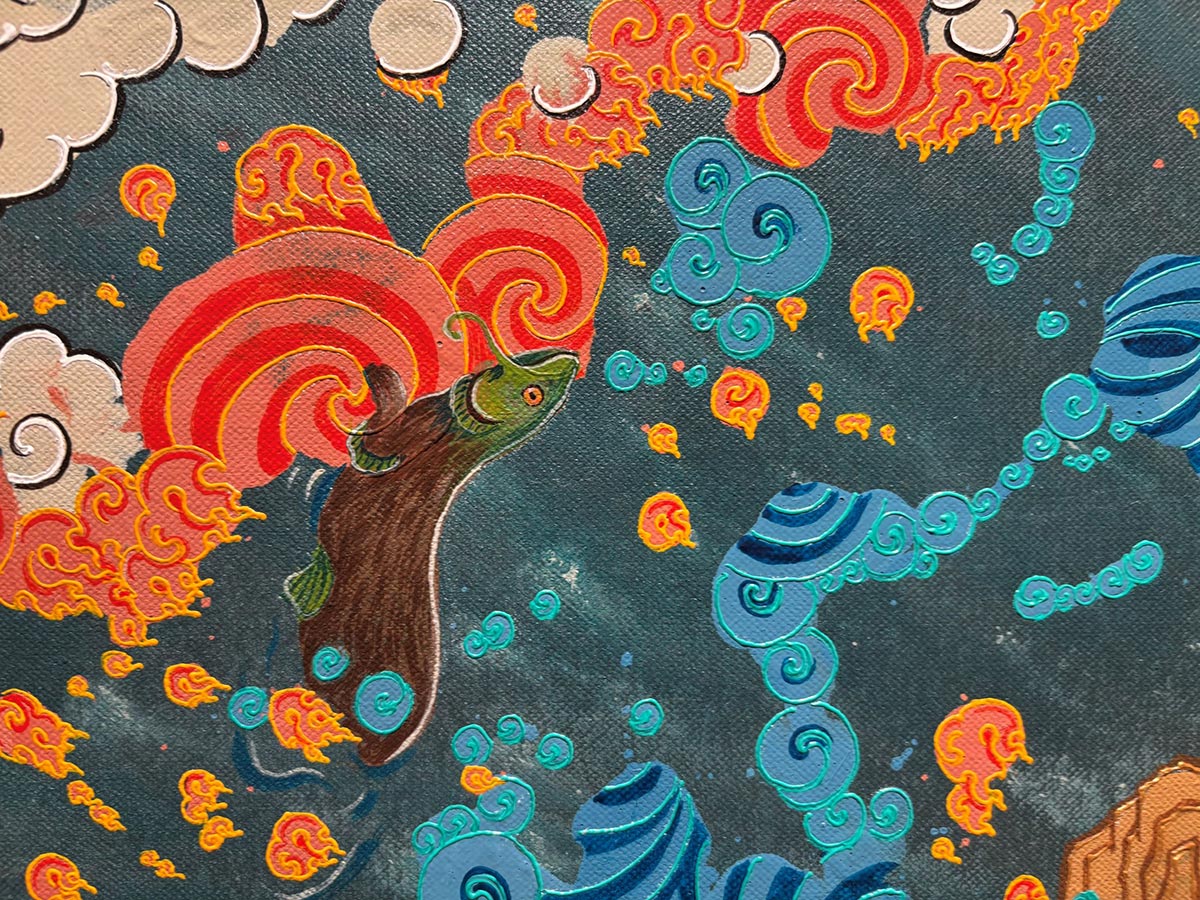
Tintin was born in 1985, and his childhood was spent mostly in Thimpu. His journey as an artist is not limited to painting. He is well known for painting, sculpture, film, and design. The most astonishing aspect of his creativity is his engagement with Buddhist symbols and the amalgamation of traditions with modernity. He uses these ancient symbols to produce affirmative compositions that consider important aspects of selfhood, impermanence, and awakening.
In his most recent exhibition, In-Between Dreams, Tintin takes us into the unfamiliar and transformative space of bardo, the space in Buddhism between life and rebirth. Through layering of visual textures, colour, masks, and mythic symbols, Tintin expresses rhythms of disintegration and regeneration that are felt within the body. For Tintin, it is all life on canvas; it is not an artefact, but a living and breathing artistic practice defined by tradition and innovation, an invitation to soften your eye and engage with the transformation and resilient nature of life.
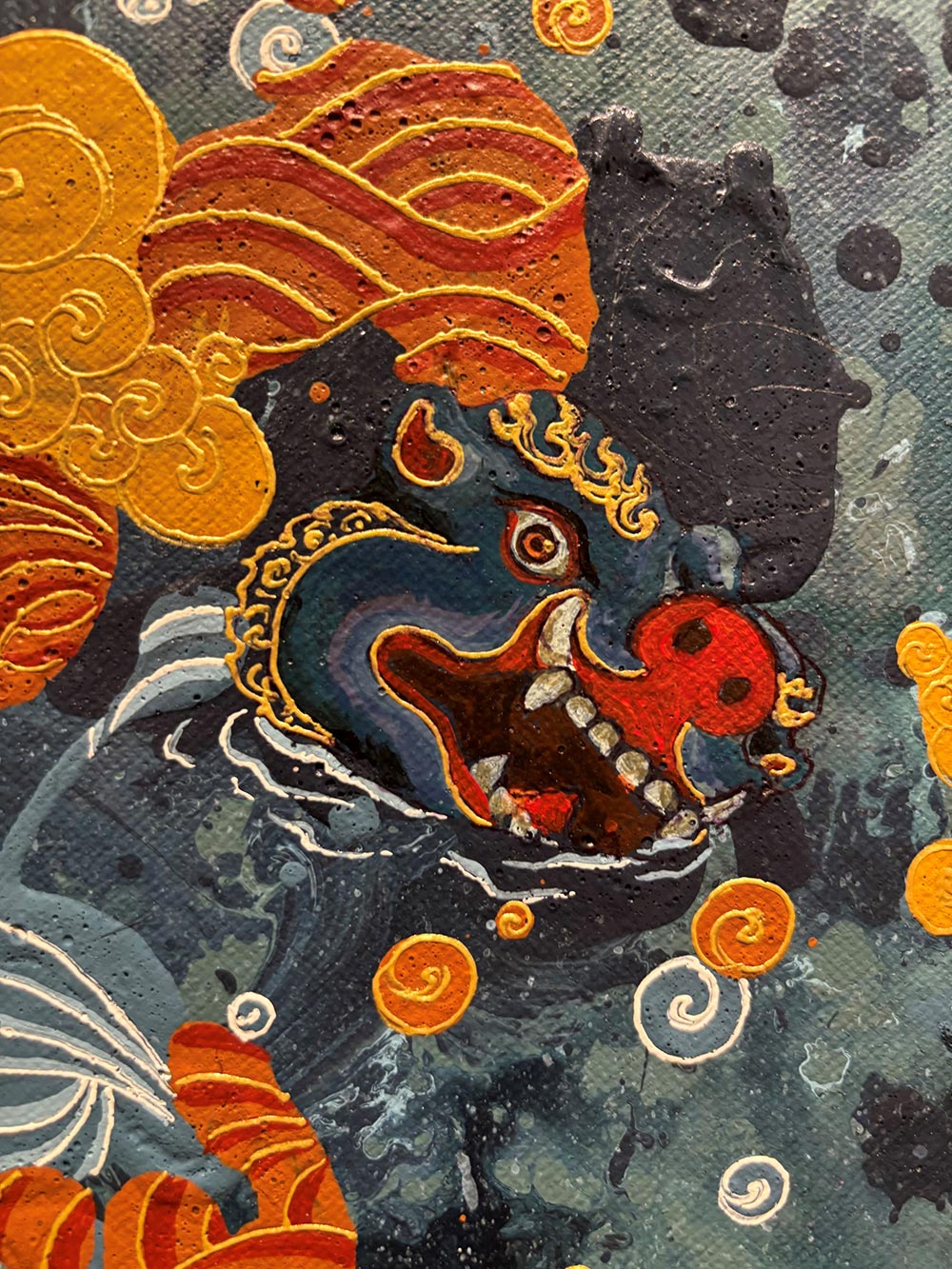
For Tintin, art is a way of life, and an embodied and harmonising practice of softening perception, and in this softening, the unfolding of becoming can be witnessed with compassion and curiosity. His work reminds us that transformation is as poignant, human, and spiritual as an experience, serpenting towards another pathway to sense-making beyond certainty.
A Journey Through Bardo
The holistic approach does not just honour Bhutan’s cultural legacy grounded in Vajrayana Buddhism, but it weaves and sustains it for the audience’s navigation. In-Between Dreams proves to be an intriguing invitation to observe and reimagine being created. Tintin invokes Himalayan cosmology, vernacular crafts, and personal memory; she weaves and paints with a voice that feels at once ancestral and contemporary.
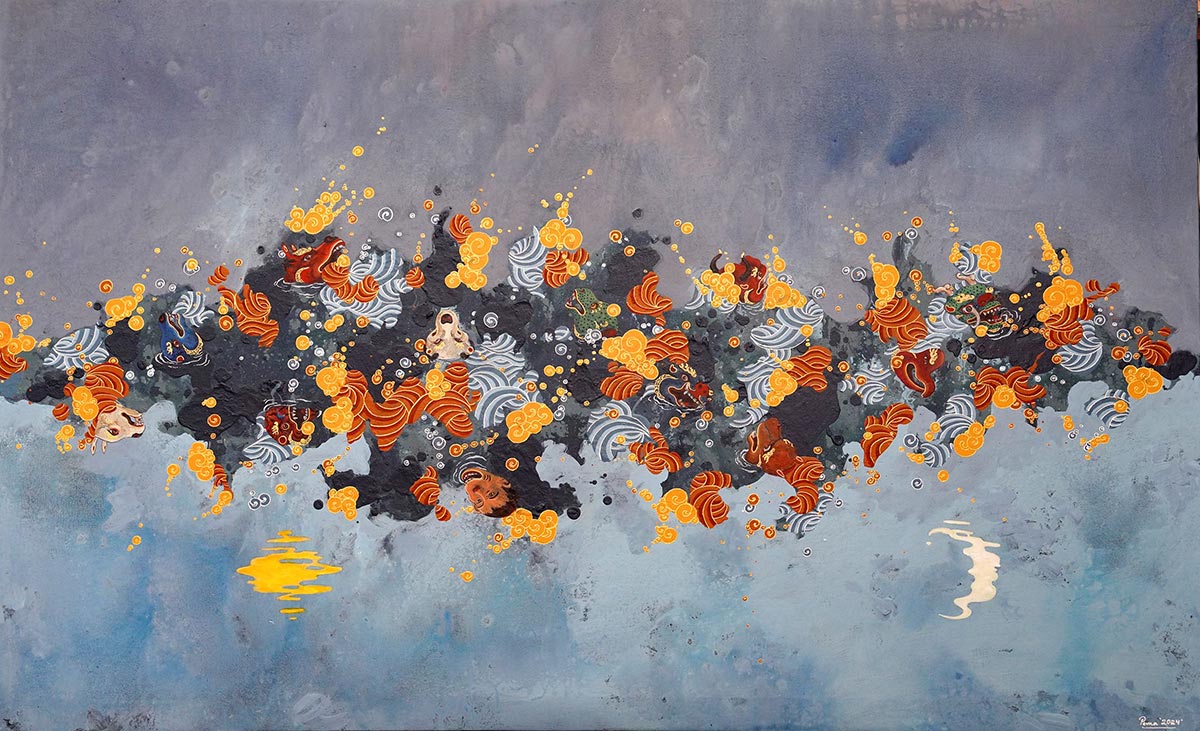
We find recurring elements in the work:
- Masks represent the multiple layers of human identity.
- Mythical beasts signify power, transformation, and our greatest primal fears.
- Simple shapes and elemental patterns lead the viewer to meditative states.
Of particular interest is Tintin’s invocation of the Garuda- a fierce protector and a symbol of freedom. The Garuda’s presence in this body of work parallels the journey of transcending mortal duality and invites the viewer towards personal flight and a resilient spirit. Embodying such profound symbols of cultural identity, Tintin condenses Buddhist metaphysics into highly visual, emotional ways of storytelling.
Artist’s Voice
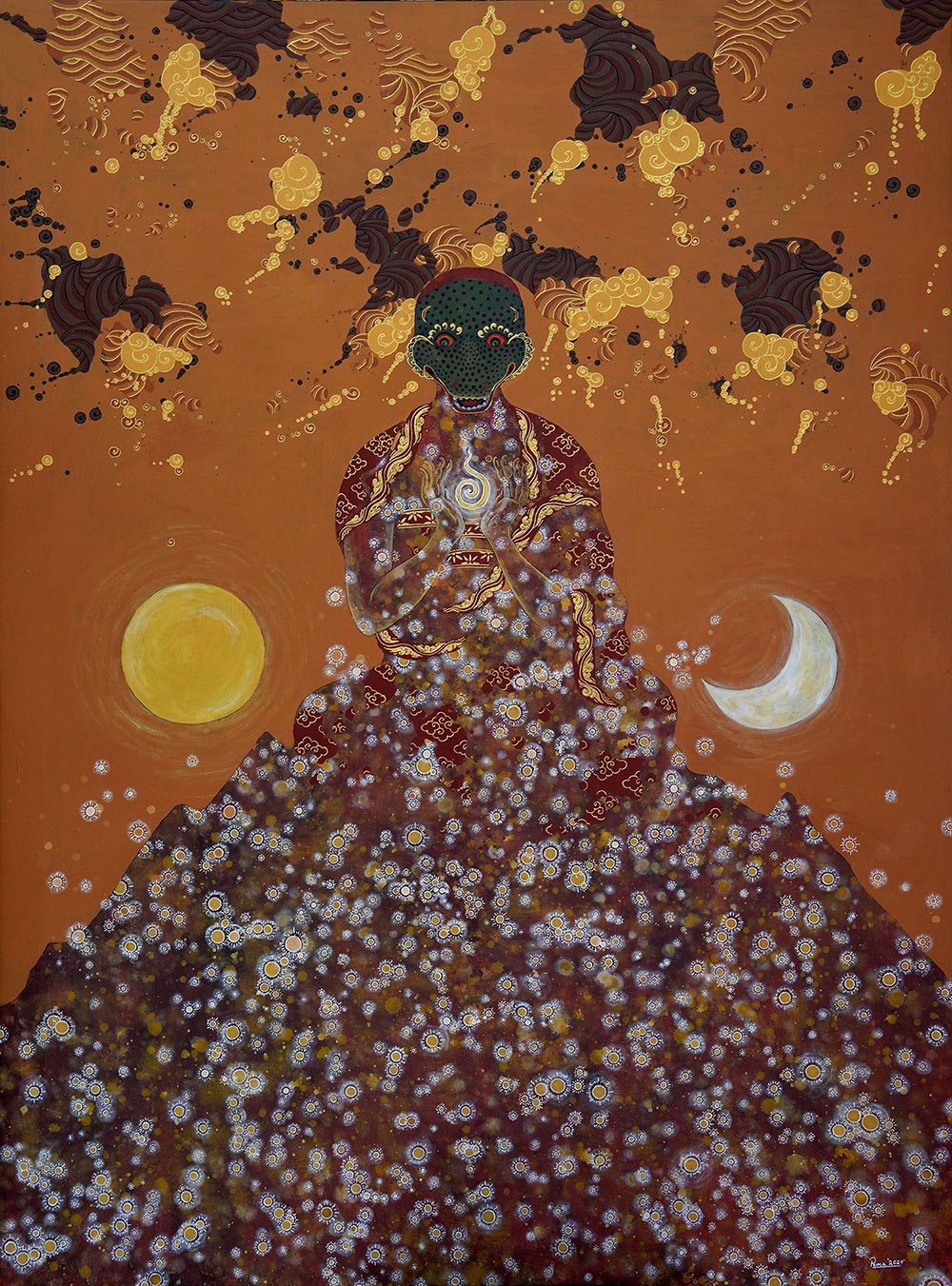
Tintin describes his purpose with remarkable clarity, stating that “We cannot understand life without understanding death. In painting the stages of dissolution, I am searching for clarity more than confidence. This work is not about answers, but about creating a space where perception might soften something within us—where we might glimpse the truth in impermanence.”
These words by Tintin not only frame the exhibition, but also act as sole points for situating morality at the centre of his artistic endeavour.
Bhutanese Origins and Present-Day Language
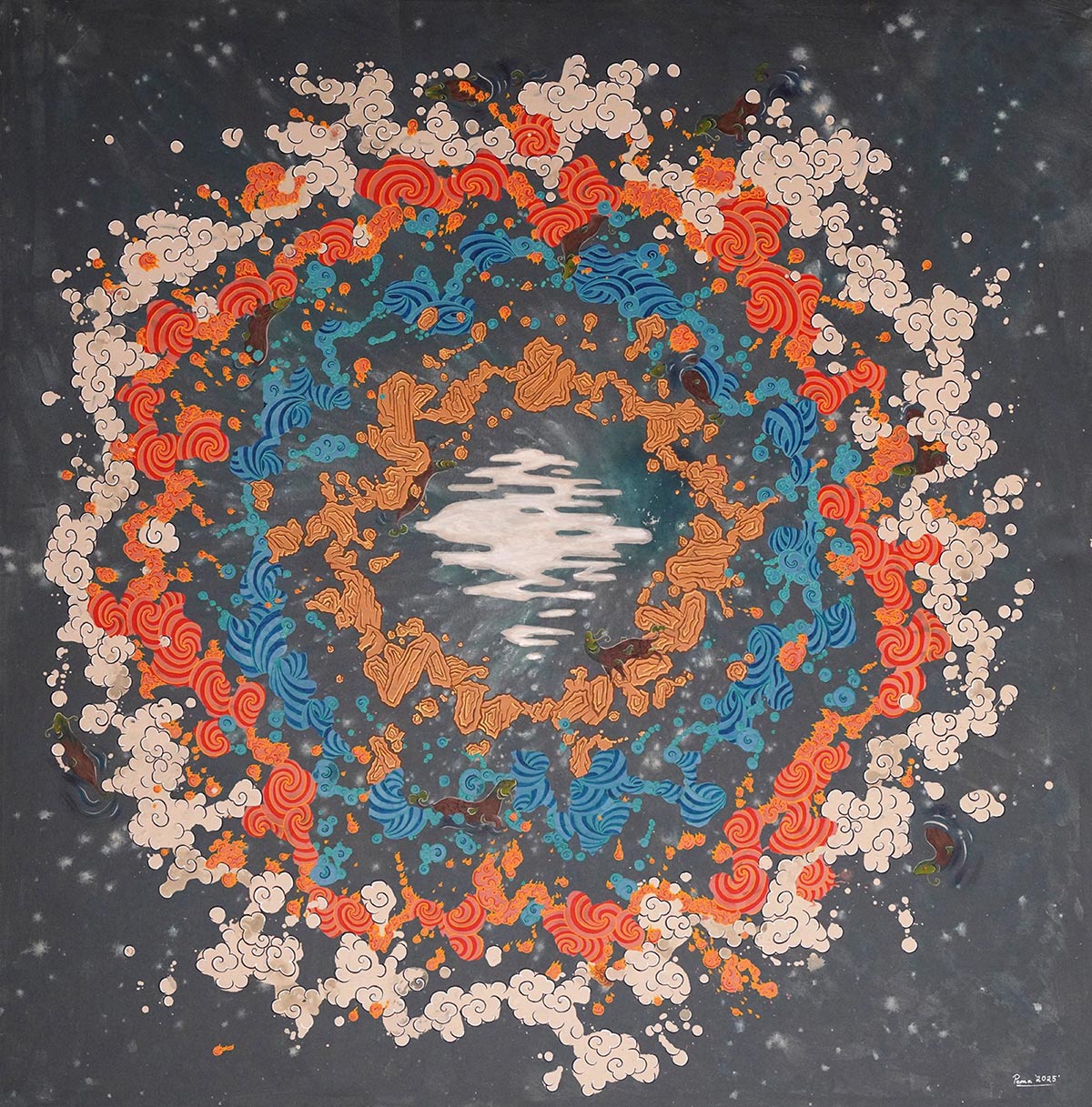
As Buddhism and spirituality are entrenched in Bhutan, it is fitting for Tintin to be practising in this context. However, he is not merely reproducing thangka to “preserve” a tradition, but rather he is re-contextualising the tradition in present-day terms. His style intentionally incorporates aspects of classical iconography, ritual precision, symmetry, intense colours, etc., with the openness of modern abstract work.
This space between tradition and experimentation allows Tintin’s work to be deeply personal, while simultaneously being widely meaningful and relevant. Despite its ties to local cosmology, the questions he is asking about endings, impermanence, and transformation are universal.
Themes That Resonate
Tintin’s In-Between Dreams touches upon philosophical questions that appeal to people across cultures. Some of the central themes include:
- Human vulnerability in the face of change
- The cycles of death, rebirth, and renewal
- Spiritual resilience and transformation
- The quiet beauty of impermanence
- Interplay of fear, light, and perception
Through his artworks, Tintin invites not just spectatorship, but introspection. Each canvas serves as a contemplative threshold, a space where the external world dissolves so that inner truths may surface.
Entering In-Between Dreams is to enter a space of stillness and depth. This is not your regular exhibition about technical virtuosity or literal narrative. Rather, Tintin’s work is more about engaging the audience with transition. That we “see,” or witness, in this case, is a witness to “not seeing.” The exhibition’s sole motive is not only to make the art enthusiasts appreciate the work, but to compel them to think about impermanence and to create a space for the acceptance of this idea.
Significance of This Exhibit
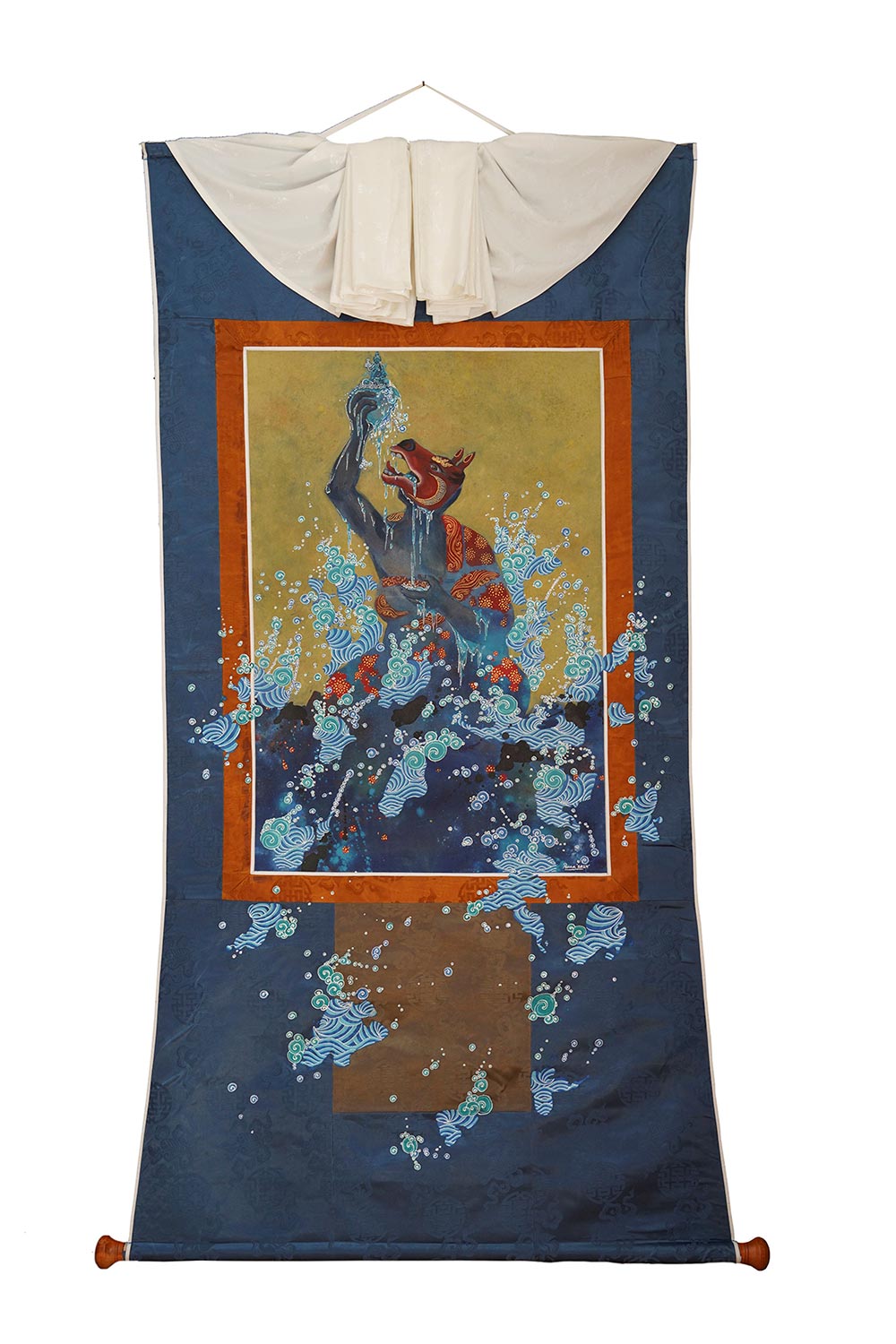
This exhibition is more than simply a solo exhibition of a Bhutanese artist in New Delhi; it is:
- A cultural connector from Bhutanese spirituality to an Indian audience.
- An approach to rethinking the sacred ontologies of art for contemporary life.
- A reminder that impermanence, often a cause of fear, can be nurtured as a natural cadence of existence.
- An inquiry into the use of art as a practice of meditation, where imagery becomes a vehicle towards awakening.
Conclusion
At its core, In-Between Dreams is an invitation to participate in the conversation between dying and renewed life. Tintin’s paintings ask us to approach impermanence not with trepidation, but with compassionate awareness.
The exhibit at the Threshold Gallery speaks far beyond the realms of the art world, in any lives led in transition – in relation to identity, loss or discovery of self.
Through his work, Tintin reminds us that rebirth occurs, not after endings, but within them. Between a breath, between loss and hope, and at the cusp of dying and awakenings – there, with the true metanoia occurs.


